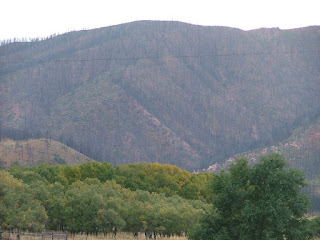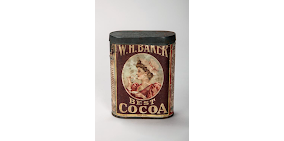By Caroline Clemmons
Researching for the books I write
leads me down interesting rabbit holes. I can’t resist learning more about the
Old West. Sod homes fascinate me, even as the idea is repugnant. Without trees or stone to build with, settlers had to
rely on the only available building material — prairie sod. Sod is the top
layer of earth that includes grass, its roots, and the dirt clinging to the
roots. Building a sod house might take weeks.
Imagine
the moldy scent and the impossibility of preventing bugs and other pests. Yet a
sod home is better than living in a covered wagon, a tent, or camping in the
elements. Probably.
In 1862 the U.S.
Congress passed the Homestead Act. This law permitted any 21-year-old citizen
or immigrant with the intention of becoming a citizen to lay claim to 160 acres
of land in what was known as the Great American Prairie. People came from all
over the world to take advantage of this opportunity. By 1900 over 600,000
claims had been filed.
The homesteaders
faced many challenges. Everything about the prairie was extreme. The land was
flat and treeless and the sky seemed to go on forever. Can you imagine looking
at a tall-grass prairie where the grass sometimes grew to be more than 6 feet
tall? It is said that riders on horseback could pick wildflowers without
dismounting. Women worried about their children getting hopelessly lost in the
grass. I can’t visualize cutting through that grass to build a sod house.
Summer brought endless days of heat, periods of
drought, rainstorms, tornadoes, swarms of grasshoppers that could destroy
fields of crops, and never-ending wind.
Some
things about modern houses are consistent: indoor plumbing, electricity, air-conditioning,
central heating, plus windows and doors that seal. This list is of things that
are important to me and probably to you. Consider pioneers who moved west and made
a home from whatever the land offered.
Paintings
of pioneers usually show early settlers living in a log cabin. Growing up, I
lived in the high plains of West Texas. Although the plains look flat, there
are ravines and canyons carving through them. Cottonwood and other trees grew
in varying numbers in the canyons where they had access to water. In general,
though, there were no trees for building homes.
Family in front of their home,
horses and wagon on top
The
first Anglos to settle in America’s massive Great Plains would have had to live
in tents, covered wagons, or sod houses. I’ve seen sod houses, or soddies, in
living history museums like the impressive Ranching Heritage Museum at Texas
Tech University in Lubbock. Yet, I’ve never seen a sod home in which someone
was living. From what I’ve researched, there were numerous problems. Imagine
eating dinner and having a snake drop onto the table.Let’s suppose you’re
a newly arrived settler looking for land. You’d search for a stream or creek
and small rolling hills which served as windbreaks. Access to planned railroad
lines was also an asset because it made it easier to ship goods and livestock
to market. As an immigrant, you might not speak English well enough to discover
information about railroads. Once you selected your land, you’d go to the Land
Office to make sure no one else had filed on the site and to file your claim.
You’d be told (although you’d probably already know)
a requirements for fulfilling the claim was building a dwelling to live in
within six months. The land wouldn’t be yours for five years. Choosing the
right site for a house was nearly as important as choosing the right claim.
Building next to a small hill provided some protection from the constant wind.
Being near a stream meant easy access to water, but building too close made
flooding a danger.
Texas soddie - I love this photo.
There are several
types of sod houses. Because tents or the top of a covered wagon provided
little comfort or shelter from the prairie's wild weather, many settlers began
by building dugouts—the fastest choice. A family might dig into the side of a
hill so that the hill formed the roof and part of three sides. This type dugout
produced a small, dark space that could be made quickly and was warmer and
drier than a tent. Many people then built
a sod house right in front of the dugout and used the dugout as another room.
A second soddie type
was the half-dugout. A family might excavate down about four feet and build
four feet up from that to form the half-dugout. This required support for the
roof, a difficult problem to solve. Various solutions involved brush and twigs
over cedar poles—which would leak in wet weather. Tin provided a better
solution if there was a way to obtain the tin and fasten it to the soddie.
Less frequently, the
entire home could be built of sod bricks, but with all four sides in the open. Again,
this presented the problem of support for the roof.
Inside with a whitewashed interior
Think about the difficulty of cutting sod.
Farmers in the 1800s used mules, oxen or horses, and special plows equipped
with curved steel blades to cut through the sod’s tough roots. Supposedly, the
roots were so tough that as the plow cut through the sod, a loud tearing sound
was created.
Farmers soon learned
that they should only cut as much sod as they planned to use in one day. Sod
quickly dried, cracked, and crumbled if not used immediately. Most farmers cut
sod from the area where they planned to build their house. Doing so provided a
flat surface on which to build and helped protect the house from prairie fires.
Removing the grass from the area also helped keep insects, snakes, and vermin
from burrowing into the house.
Interior of sod house with a window.
Imagine how dark it would be without
that window.
Freshly cut sod
bricks were laid root-side up in order for the roots to continue to grow into
the brick above it. Over time, the bricks in fact grew together to form a very
strong wall. Amazing, isn't it?
Most modern houses in the United States are built
straight up and down, with angled roofs, and brick or wooden exterior walls
that keep out the rain and other elements. Sod houses, however, required a
thick, wide foundation. The walls sloped down on the outside of the house so
that as the walls settled, they would not collapse. The top of the house looked
smaller than the bottom.
Some
soddies were lined with cheesecloth to prevent uninvited guests from literally dropping in.
I’ve read tales of people watching bugs crawl inside the cheesecloth. Even if
the settlers were tolerant of what shared their home, I suspect there were many
events of this type that today’s dwellers would find unbearable. (Like a snake dropping out of the ceiling.)
Folks
occasionally whitewashed the inside of the soddie to limit falling dust and
brighten the interior. The whitewash was made primarily of slaked lime and chalk.
Many people (like me) were allergic to the substance.
People
with allergies probably didn’t last long in that environment. One of the
stories from my ancestors includes that of an asthmatic boy who developed
pneumonia from the soddie’s interior smells of mold, smoke, and other
irritants. His parents had to move him into a tent just outside the sod house.
He survived in spite of his illness and the winter weather. Before the next
winter, the father built a frame home and united the family under one roof. There's a theory that Laura Ingalls Wilder and her husband were victims of mold.
Weather permitting, you'd likely spend a lot of
time outside the dugout or soddie.
The
elaborateness of the sod home varied due to the builders. Some were made of sod
formed into precise bricks and constructed into a stable structure. Others were
slap-dash to create shelter. I think of sod homes as a product of the American
west, but one photo showed a more elaborate sod home in Europe. Other photos indicated poor Dutch and Belgium residents lived in houses made of sod.
Note the sloping sides for stability.
In
spite of my personal bias against them, I have read accounts stating they were
cool in summer and snug in winter. Compared to hastily thrown up wooden homes,
perhaps they were more comfortable, especially in winter. They were good shelter from the wild prairie
weather. The fact that they were basically made of dirt made them virtually
fireproof. Walls of many rapidly constructed buildings consisted
of only a thin wooden wall with no weatherproofing and poorly crafted joints.
A
friend told of her great-grandmother Jane living in a sod home cut into the
side of a rise. While Jane’s sons and husband were working in the field, two
bulls got into a fight on the roof. Dust drifted down into the home and she
feared the animals would fall through. They didn’t, but that must have been a
terrifying event for a woman with two small girls to protect. In fact, being an
early settler must have been an ordeal that required grit and resourcefulness every day.
A family in front of their part dugout home.
The requirement for fulfilling the terms of the claim agreement varied for different types of claims. Whether it meant building a structure to live in within six months; raising successful crops and staying for five years; planting a certain number of acres of trees; or purchasing the land from the government - less than 50% of the homesteaders succeeded. Bad weather, illness, an accident, or loneliness could bring a homesteader's dream of land ownership to a bitter end. Those who failed went back home or continued moving west.
I
don’t know how you feel, but I’m grateful for my home. The weather outside is
hot today, but here at the computer in my office, I’m cool and comfortable.
Electricity provides for the climate controlled interior, the computer, and the
music playing while I write. Hero brought me a Cherry Dr Pepper in my favorite
glass (you see one of the reasons I call him Hero). I positively love writing
and reading about the Old West, but I’m glad I live today instead of then.
Sources:
https://amhistory.si.edu/ourstory/activities/sodhouse/more.html
Kansas
State Historical Society
Texas State Historical Society
Caroline Clemmons is an award winning bestselling author. Her
latest release is
THEODOSIA, A Proxy
Mail-Order Bride, available
here
from Amazon and enrolled in Kindle Unlimited. Check out her
Amazon
author page and her website at
http://www.carolineclemmons.com
Sign up for
her
newsletter here and receive a FREE western historical romance novella,
HAPPY IS THE BRIDE.























































